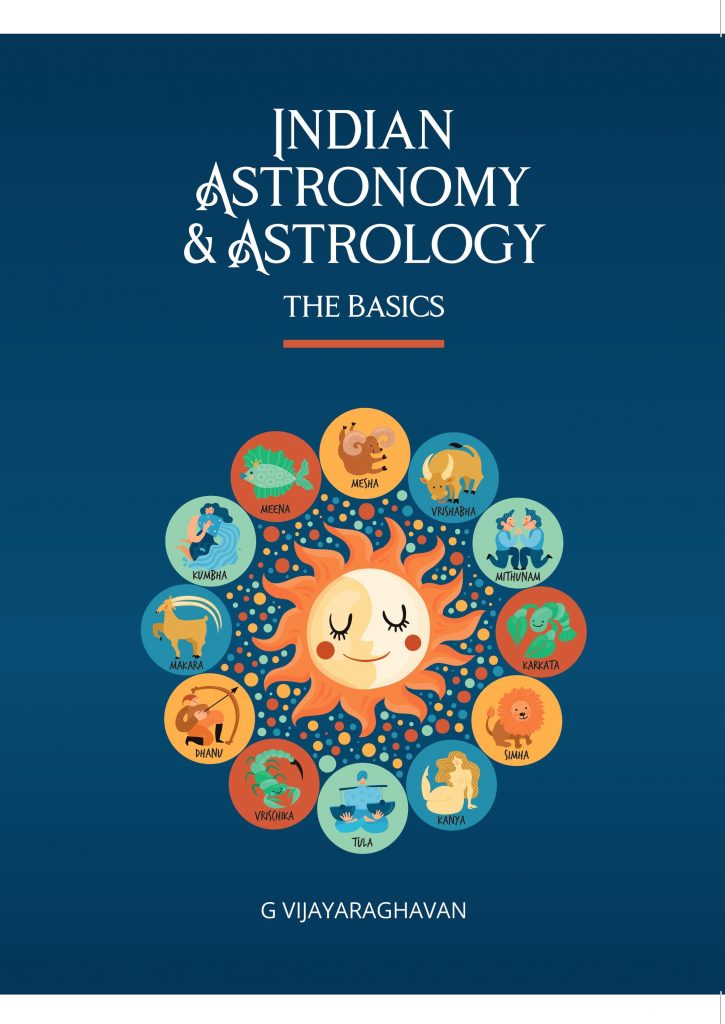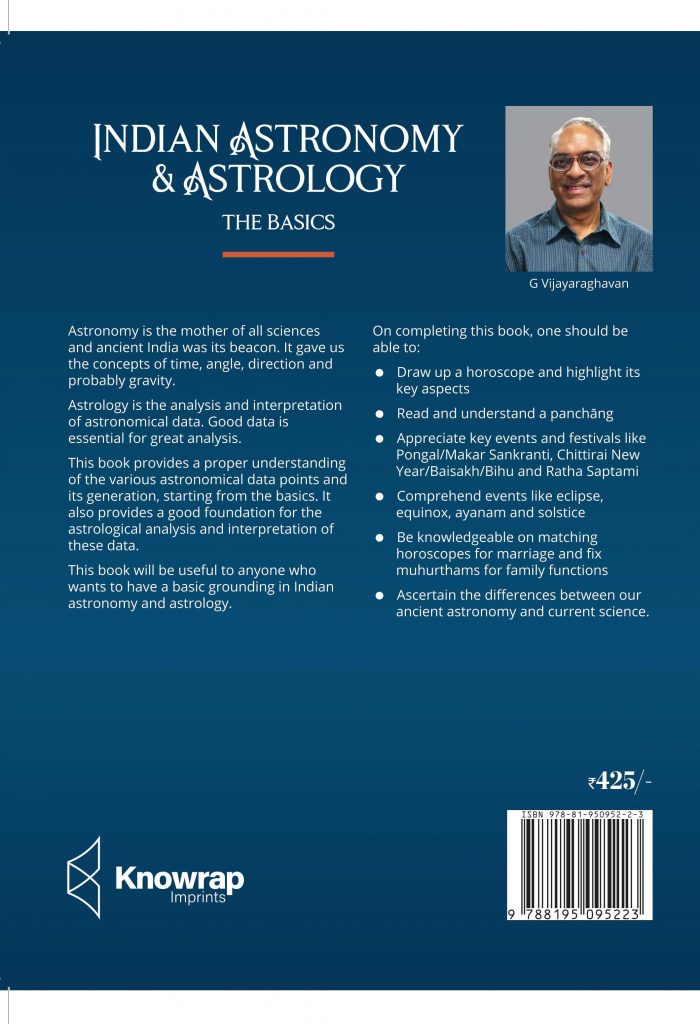
INDIAN ASTRONOMY & ASTROLOGY – THE BASICS
Authored by Mr G Vijayaraghavan (PGP 1980)
The author took up the study of Sanskrit post-retirement and wanted to take a closer look at one of the Vedangs and chose Jyotish. It offered a good opportunity to analyse the scientific temper in our ancient knowledge systems. The book is based majorly on Varāhamihira’s seminal work Brihat Jataka but takes a deep dive into ancient astronomy and parallels it with current science before getting into astrology.
Astronomy is a definitive knowledge system whereas astrology is a statistical knowledge system. The book covers both astronomy and astrology in fairly good depth for a beginner. The concept of time as established by our ancients and the impossibility of using the decimal system to measure time are exciting. It helps clear the air on whether Indian astronomy and astrology are mostly mumbo jumbo masquerading as science!
The concurrence of the Rashi Nakshatra system of ancient Indian astronomy with current science is a highlight but the WYSIWYG of using the geocentric system over the heliocentric and the issues therein are clearly explained.
The contents of a panchang in its minute details are discussed. The scopes of a horoscope and the process of drawing it up are covered.
The horoscope is based on astronomy. Astrology is the interpretation of the horoscope. The various positional derivations and their interpretation is described at a beginner level only. The process of deriving the more complex drilldowns of the horoscope have been shown but their interpretation has been left out as this is a book for beginners.
SYNOPSIS On completing this book, one should be able to:
1. Understand the concept of time and how it is measured
2. Comprehend events like eclipse, equinox, solstice and ayanam
3. Appreciate key festivals like Makar Sankranti, Chithirai/Baisakhi/Bihu
4. Read and understand a panchang
5. Draw up a horoscope and highlight its key aspects
CONCLUSION Astronomy is the mother of all sciences and ancient India was its beacon. It gave us the concepts of time, angle, direction and probably gravity.
Astrology is the analysis and interpretation of astronomical data. The book provides a good foundation along with proper understanding of the various astronomical data points and its generation, starting from the basics. The comparison with current science is a plus.
The book will be useful for basic knowledge of Indian astronomy and astrology within the perspective of modern science.


